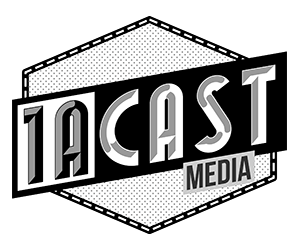At this May’s primary election, voters will see the usual assortment of special district elections, the most significant of which are local school board races. But for the 1.5 million Oregonians who are within the jurisdiction of Metro’s regional government, they will vote on measure 26-152, which Metro touts as a badly needed local option levy to remedy issues from its last measure in 2006. In fact, Metro claims it cannot afford to maintain and restore its own assets without this levy, despite the fact Metro’s all funds budget increased from $383,743,000 in 2011-2012 to a whopping $535,818,000 in 2012-2013.
But as you will see below, Metro has flat out lied to voters in its in-house prepared ballot measure filed with county elections officials on January 28, 2013. I do not make that claim lightly. As an attorney in Oregon, I have handled many ballot title challenges, including statewide measures argued before the Oregon Supreme Court dating back to the early 1990’s. Differences of opinion do not usually rise to false statements of material fact. This is not a difference of opinion. All the evidence we need to reveal Metro’s duplicity is found in the language of Metro’s own ballot measures.
The Metro Lie
Measure 26-152 is a proposed five-year local option levy that seeks to raise $10 million per year. According to the measure’s summary statement, 26-152 would create “a dedicated fund to improve water quality for salmon and native fish, remove invasive weeds that threaten the health of these natural areas, restore wetlands and provide opportunities for people from around the region to experience nature close to home.” The compelling need for this $10 million dedicated fund is explained in the summary, signed by Martha J. Bennett, Metro’s current Chief Operating Officer:
“Twice in two decades, Metro voters approved measures to acquire thousands of acres of natural areas throughout the tri-county region. Past measures could not include money for maintenance and restoration.” [emph added by editor of this blog]
Thus according to Metro, the regional behemoth with a half billion dollar budget needs this new local option levy for money in part to restore the lands Metro purchased with its GO bonds, since the previous bond measures could not include money for restoration. And here is where Ms. Bennett and the Metro Council have lied to their constituents.
Background
In May 1995 voters in the Metro region approved a $135.6 million bond measure entitled the “Open Spaces, Parks and Streams Bond Measure.” The stated goal of the measure was to use the GO bonds to acquire land in 14 of the 57 regional natural areas identified in the 1992 Greenspaces Master Plan and six of the 34 regional trails and greenways identified in the Greenspaces Master Plan.
In 2006, Metro voters approved measure 26-80, which authorized Metro to issue $227.4 million in general obligation bonds, again to buy up land to add to Metro’s growing real estate portfolio. And Metro’s portfolio has now ballooned to more than 16,000 acres of newly acquired land, which even Metro’s own staff admit has created an unsustainable burden on the regional government’s general fund budget. According to Metro’s current ballot title summary, those general obligation bonds approved in 1995 and 2006 could not be used to restore the land purchased, hence the need for this new operating levy.
Measure 26-80
When Metro voters approved 26-80 in November 2006, what exactly did Metro say that $227.4 million would be used for? The first and best place to begin is with the ballot title facing every voter. Regardless of voter pamphlet statements or campaign materials, the ballot title is the official statement of what a measure intends to do. Here is the 175-word Summary of Measure 26-80:
Protects specific natural areas, lands near rivers and streams, wildlife and trail corridors through land acquisition and restoration. Funds specific local water quality, wildlife and park protection projects for local parks providers. Funds water quality and wildlife habitat restoration matching grant program for local communities. Requires 2 to 1 match for local community grants. Match may be met with volunteer hours. Approved bonds will:
· Preserve specified natural areas
· Protect and restore watersheds for improved water quality
· Protect streams, fish and wildlife
· Increase the presence of nature in neighborhoods
This measure directs Metro to buy and restore natural areas for the protection of water quality and preservation of fish and wildlife habitat for the benefit and enjoyment of current and future generations, establishes a citizens oversight committee and requires a yearly independent financial audit to be published in local newspapers. Bonds mature in not more than 20 years. Bond cost estimate is about 19 cents per $1 ,000 of assessed value per year. The average homeowner in the region pays $2.50-$2.92 per month.
Despite Metro’s current position that Measure 26-80’s $227.4 million in GO bonds could not be used for restoration of the lands purchased with those monies, Metro’s former COO, Michael J. Jordan, certified with his signature that those bonds clearly would be used to “buy and restore” the lands Metro purchased. [Jordan left Metro in 2011 to become the State of Oregon’s COO under Governor Kitzhaber.] So which Metro COO is or was telling the truth? In 2006, Mr. Jordan and the Metro council sold Measure 26-80 in part on the promise that $227.4 million raised would be used not just for purchasing natural areas, but also to restore those lands for protection of water quality and preservation of fish and wildlife habitat.
Not once in 26-80′s ballot title, explanatory statement or arguments in favor in the voter’s guide was there any suggestion or statement that those bonds could not or would not be used for habitat restoration. To the contrary, restoration of habitat purchased was a major selling point, which even prompted an argument in favor statement to be jointly filed by 15 mayors within Metro’s boundaries, including five in Multnomah County.
But now in 2013, facing skyrocketing costs of maintaining that burgeoning real estate portfolio, Jordan’s replacement COO Bennett and the current Metro council are now pitching a local option levy by claiming Metro needs money to restore the land it has purchased since 2006 because Measure 26-80 “could not include money for maintenance and restoration.” Note the distinction between “maintenance” and “restoration,” because they are different issues. In Exhibit A to Metro Resolution No. 12-4398, Metro officials themselves acknowledged that “Money approved by voters for land acquisition in 1995 and 2006 cannot be legally used for operating expenses.” But “restoration” is more accurately described as a capital improvement, hence its inclusion as legitimate expense funded by bonds under 26-80.
Metro councilors know that if they go to voters with a local option levy solely to fund ongoing operating expenses, voters would surely and skeptically ask, “What are you doing with the half billion dollars we gave you this year?” So, instead the Metro council instructed Ms. Bennett to sign a ballot title with a summary that downplays the maintenance costs while repeating and overemphasizing the “restoration” theme:
Twice in two decades, Metro voters approved measures to acquire thousands of acres of natural areas throughout the tri-county region. Past measures could not include money for maintenance and restoration.
This levy creates a dedicated fund to improve water quality for salmon and native fish, remove Invasive weeds that threaten the health of these natural areas, restore wetlands and provide opportunities for people from around the region to experience nature close to home.
Cost
The estimated cost for the typical household is $20 per year for five years.
Result of a “yes” vote
• Improve water quality in local rivers and streams for salmon and other native fish including the
Clackamas, Sandy, Tualatin rivers; Fanno, Johnson creeks.
• Restore wildlife habitat and remove weeds that choke plants wildlife need for food and shelter.
• Restore wetlands and floodplains to control flooding, provide habitat for birds and amphibians.
• Construct or replace capital projects in parks, such as restrooms, picnic shelters, playgrounds.
• Provide nature education programs in natural areas to visitors and school-aged children.
The proposed rate (at $.096/$1,000) will raise approximately $10.2 million in 2013-14. $10.4 million in 2014-15, $10.6 million in 2015-16, $10.9 million in 2016-17 and $11.2 million In 2017-18. The estimated tax cost for this measure is an ESTIMATE ONLY based on the best Information available from the county assessors at the time of estimate
 Metro’s new ballot title has compounded its error by claiming the general obligations bonds approved by voters in the past could not be used for habitat restoration (when in fact they could and were so used), but now Metro wants to use operating cost money raised by this local option levy to not only “restore” wildlife habitat, but also to “construct or replace capital projects” in its parks. Apparently the Metro council and staff cannot tell the difference between a general obligation bond and an operating levy, nor can they distinguish between ongoing maintenance and capital construction projects. Until Metro explains itself on these issues, Metro voters in Multnomah, Clackamas and Washington counties should just say No to Metro’s manipulative lies and demand the agency finds the $10 million it wants from voters in the $536 million it its current adopted budget.
Metro’s new ballot title has compounded its error by claiming the general obligations bonds approved by voters in the past could not be used for habitat restoration (when in fact they could and were so used), but now Metro wants to use operating cost money raised by this local option levy to not only “restore” wildlife habitat, but also to “construct or replace capital projects” in its parks. Apparently the Metro council and staff cannot tell the difference between a general obligation bond and an operating levy, nor can they distinguish between ongoing maintenance and capital construction projects. Until Metro explains itself on these issues, Metro voters in Multnomah, Clackamas and Washington counties should just say No to Metro’s manipulative lies and demand the agency finds the $10 million it wants from voters in the $536 million it its current adopted budget.
Bruce McCain is an attorney in private practice, a retired Multnomah County Sheriff’s Captain and a member of the Victoria Taft Blogforce. This post originally was published here at his blog.






